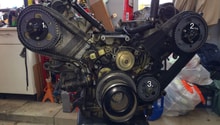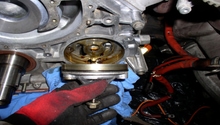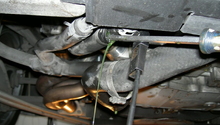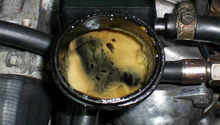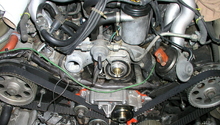Porsche 928: How to Replace Radiator
A junk radiator will leave your car overheated, sitting in a puddle of it's own coolant. If yours is toast, then replace it immediately.
This article applies to the Porsche 928 (1979-1995).
A Porsche 928's radiator is probably one of the most commonly replaced parts of this particular line of vehicle. Due to no fault of the manufacturer, the radiator, as a part, is typically one of the most repaired pieces of cars that are driven over extensive periods of time. The need to replace a radiator can be due to several reasons. Rusting, for example, can occur along the inside and outside of the body over time. Also, there might be leaking along the radiator valves, an ailment that occurs when sticky coolant debris disrupts the coolant flow which, in turn, creates excessive pressure along the valve region and causes the area to leak. Continue reading to learn how to replace the radiator on a Porsche 928.

Materials Needed
- Radiator, # 928M ALRADLRE (prices vary)
- Screwdriver
- Hammer
- Socket/Wrench set
- Two wrenches
- 2 gallons of coolant (prices vary)
- 2 gallons of distilled water
- Drainage pan/bucket
Step 1 – Disconnect battery
You will be disconnecting wires throughout this procedure. To limit the risk of electrical shock, disconnect your car's battery.
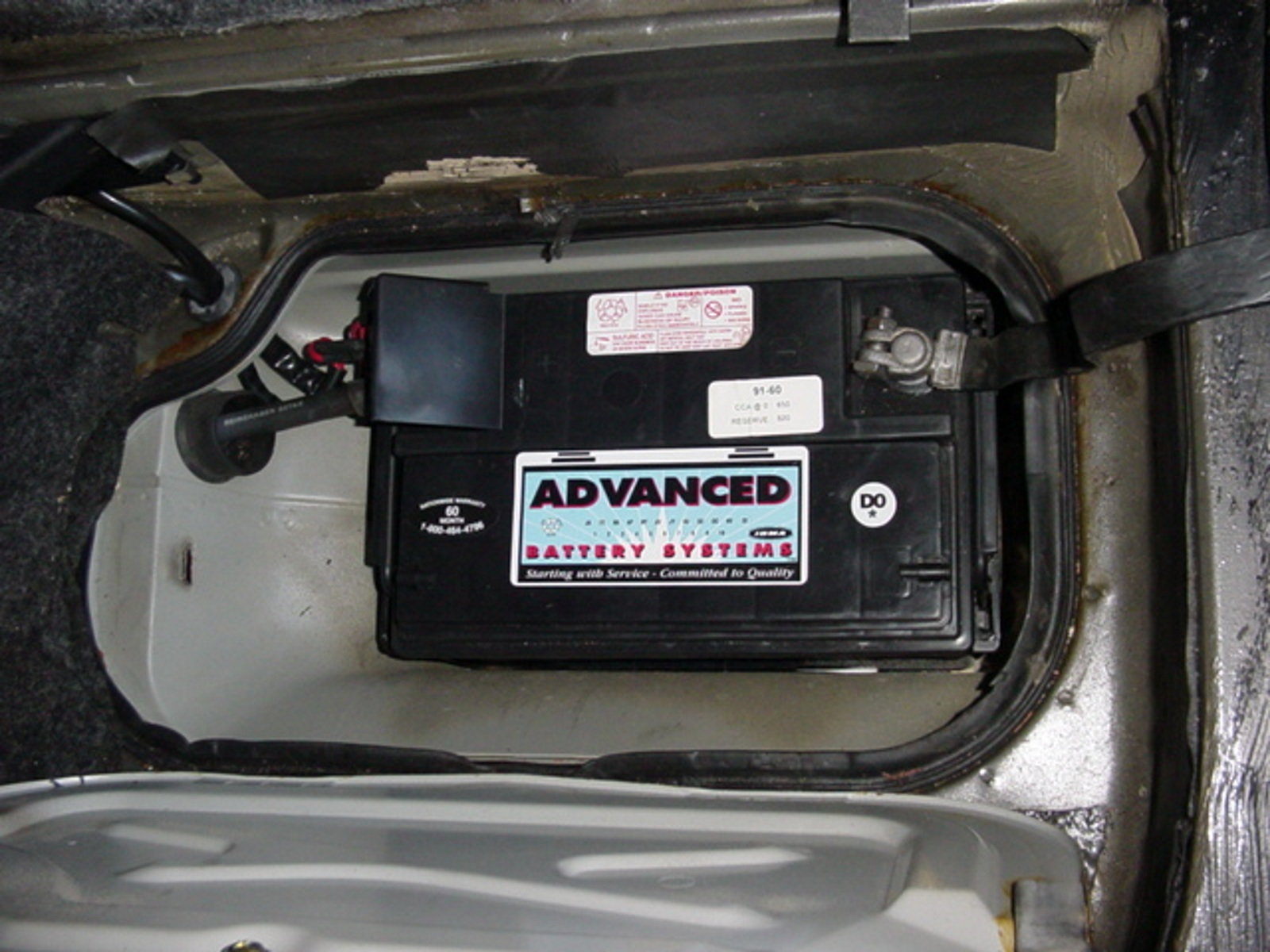
Step 2 – Remove old radiator
- Remove two cold air tubes running from the air filter box to the top of the radiator fan shroud. Next, remove the two bolts that secure the upper fan shroud (near top). Now remove the upper radiator hose.
- In the center of the fan shroud there may be a small air filter housing for the EGR system. If this is the case, loosen the clamp and remove the hose attached to it.
- Disconnect electrical plugs at each of the two fans, and loosen wire looms from fan shroud.
- Locate hose clamp around power steering reservoir and remove. This will allow the reservoir to be pushed out of the way when the shroud gets lifted out. NOTE: The reservoir does not have to be drained.
- Using two wrenches, position them in opposite directions and remove the oil cooler lines where they connect to the radiator end tanks. NOTE: The number of integral oil coolers in the radiator end tanks varies with the options on your Porsche 928.
- Push the power steering reservoir toward the motor and lift the fan shroud up and out of the car.
- Remove radiator hold down clamps.
- Loosen and remove clamp attached to small vent hose leading to the top of the radiator tank. This hose lays in a metal tray hooked on to the top front of the radiator. Lift it up and move to the side so that it's out of your way.
- Below the radiator, there's a blue plastic drain cap. These break easily, so rather than using it, simply place a drain bucket/pan below the lower radiator hose, loosen clamps on either end, and remove the hose from the car (bucket will catch everything that comes out).
- Tip the radiator towards the engine at the top so that you can get to the fan switch found at the bottom-front left end tank. Disconnect wire connector from this fan switch.
- Lift radiator straight up and out of the car.
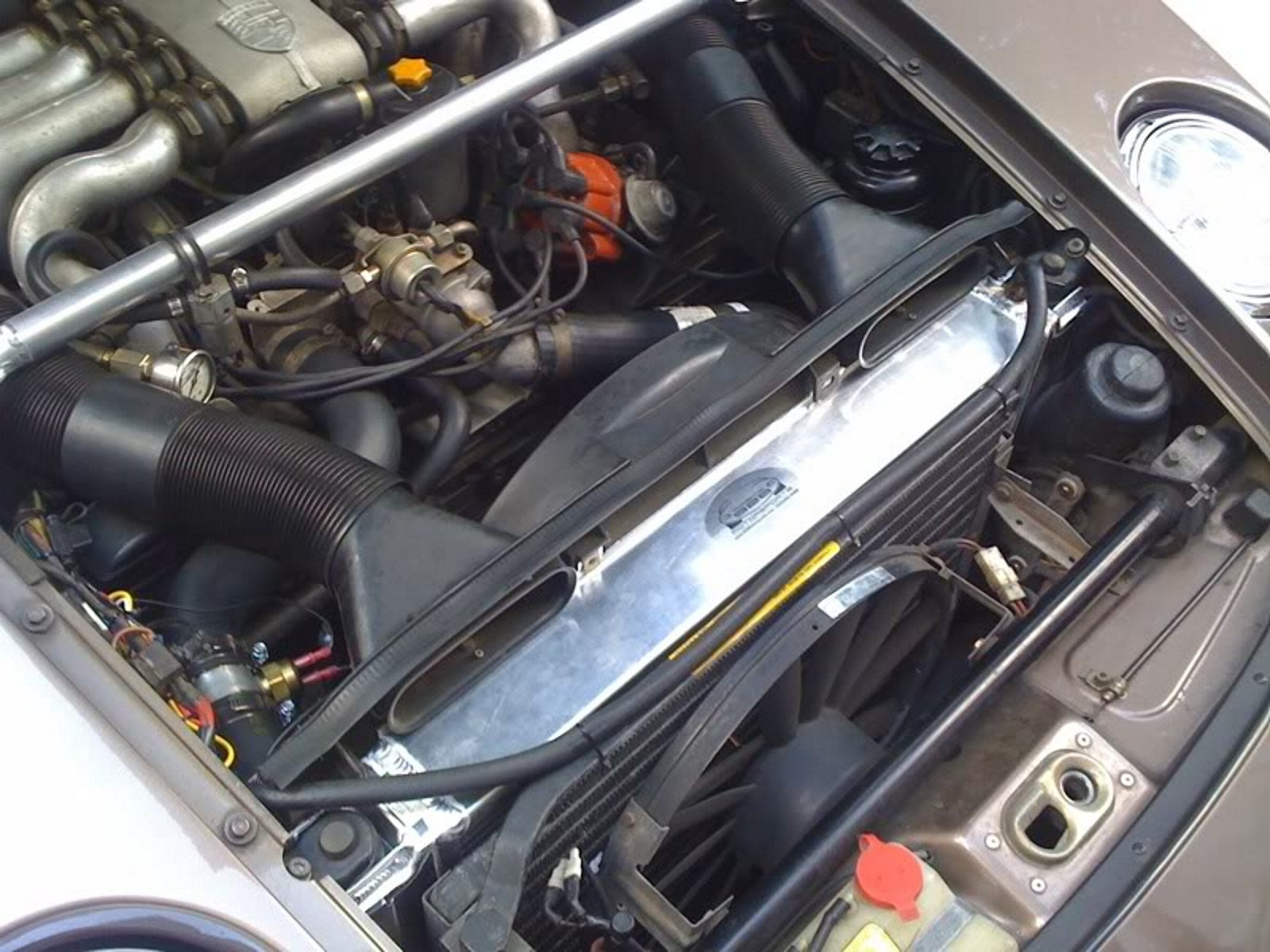
Step 3 – Remove oil cooler fittings from end tanks
Apply them to new radiator.
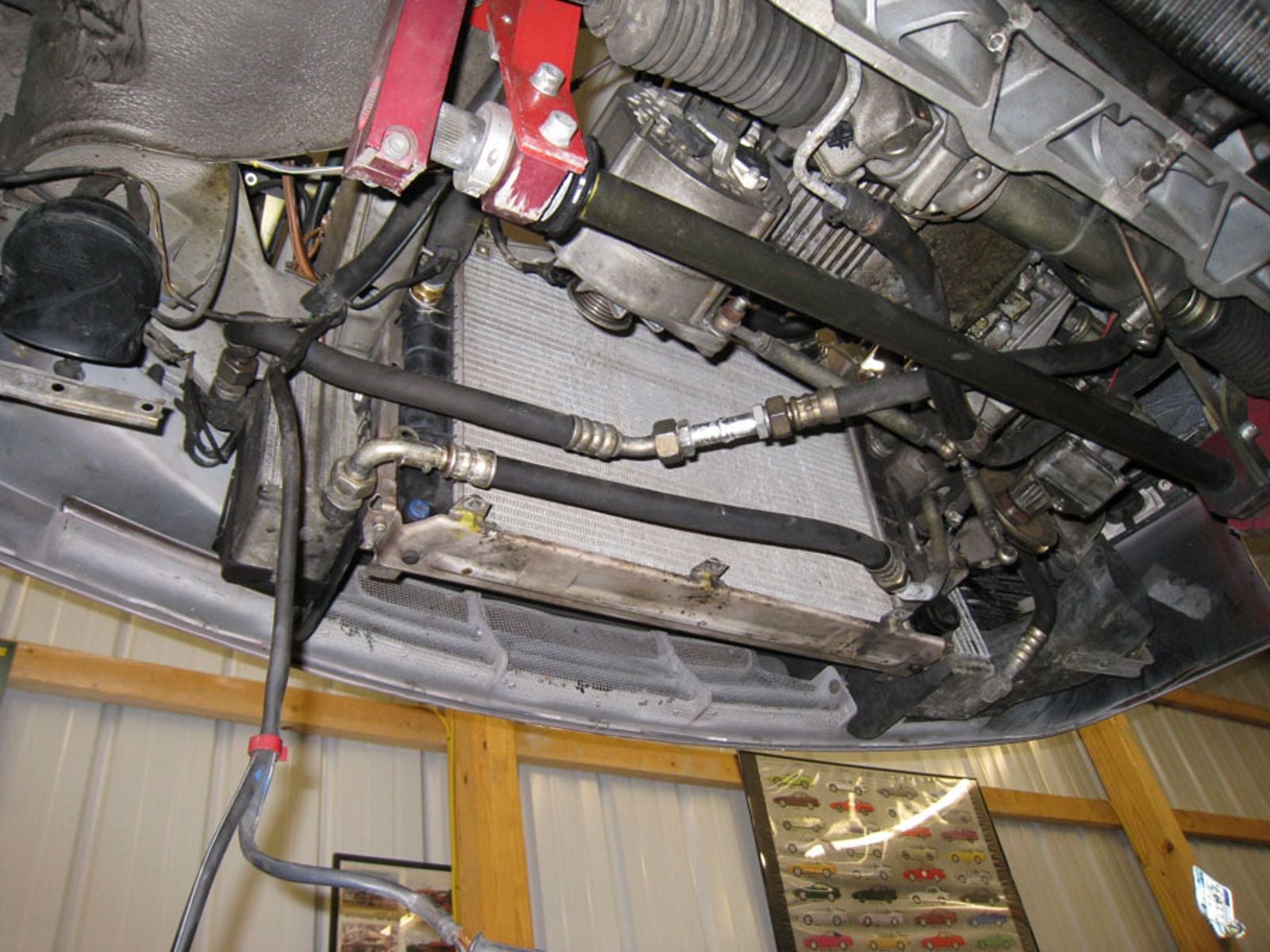
Step 4 – Remove fan temperature switch from old radiator
Mount to new radiator.
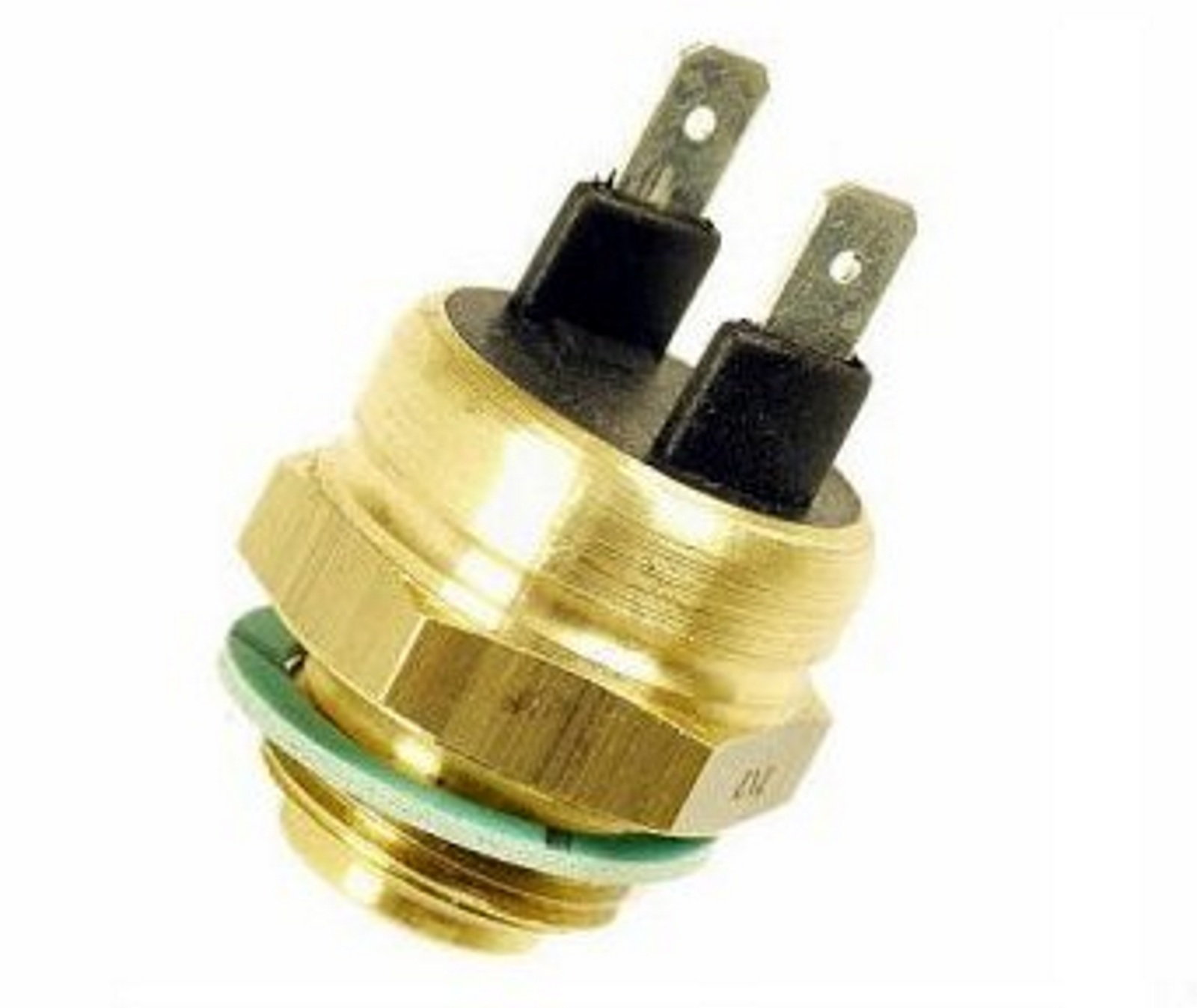
Step 5 – Remove radiator vent fitting from old radiator
Unscrew the worm clamp and install to new radiator.
NOTE: Steps 3-5 are as appropriate to your particular installation procedure. If you purchased these parts new, or they came with your new radiator, skip as appropriate.

Step 6 – Check for debris
Look for dirt, grime, and leaves. Clean the area as appropriate with a soft brush and rag, and dry vacuum.

Step 7 – Install new radiator
- Slide the new radiator onto the lower radiator mounts. Make sure the radiator's rubber donuts are located inside the pocket on the bottom of the end tanks. This is to ensure the radiator is sitting as low as possible.
- Slide the fan shroud in place and loose mount to the radiator with two bolts (don't tighten all the way just yet).
- Close the hood to ensure proper height placement of radiator.
- Assuming hood closes, open up again and lean radiator top back toward the engine and connect fan switch wiring.
- Bring small radiator vent hose back over and attach to nipple on left end tank.
- Attach lower radiator hose to radiator.
- Slide radiator fan and shroud into proper placements (don't attach yet).
- Re attach all oil/transmission lines to radiator end tanks.
- Fasten fan shroud to radiator.
- Plug in fan to fan wiring harness.
- Re-install radiator hold down clamps.
- Attach lower radiator hose to motor at the thermostat housing (take note to install tie back, as this holds the lower radiator hose away from the belts).
- Install upper radiator hose.
- Reconnect EGR air hose (again, as appropriate).
- Add coolant: 50% water, 50% anti-freeze.
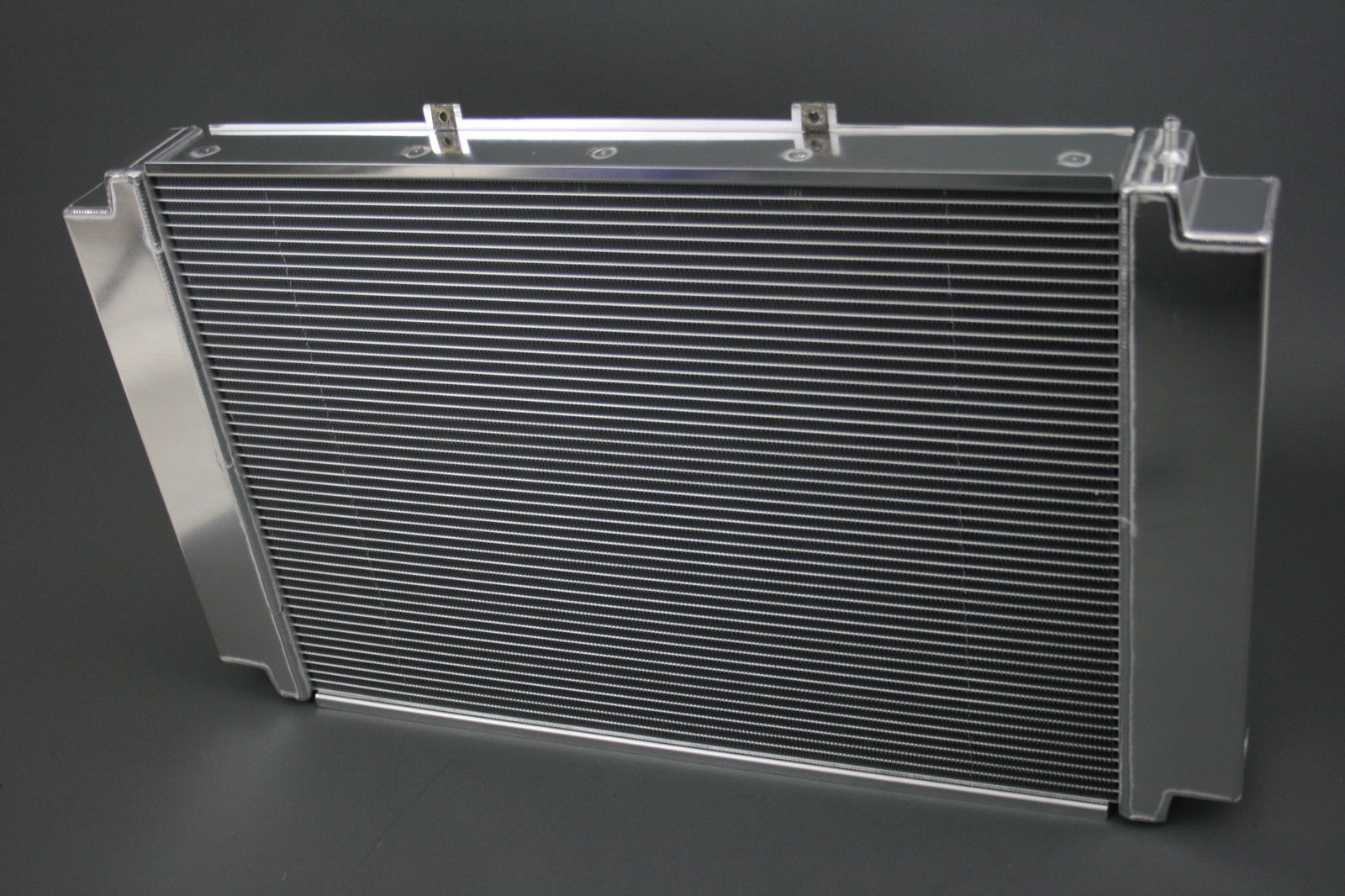
Step 8 – Re-connect battery
Re-connect the battery.
Step 9 – Run engine without the radiator cap on to ensure air gets out
The car should be run for about 15 minutes. Afterwards, check all hoses for leakage and the radiator area for anything that may have moved. Do this again, on occasion, over the next few times you drive your Porsche 928 to ensure all components are properly secured to the vehicle.
Related Discussions and Site
- Changing Radiator Without Breaking Tabs - Rennlist.com
- Replacing Radiator End Tank - Rennlist.com
- Additional Radiator Info - 928motorsports.com

